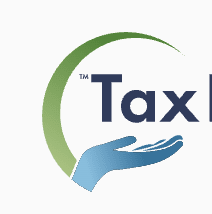
However, an extension only delays the filing deadline, not the payment deadline for any taxes you owe.
Understanding how to request an extension is crucial to avoiding costly mistakes. For complex situations involving significant tax liabilities or multiple income sources, our best tax relief companies can help ensure you meet all requirements correctly.
This article will explain the extension process, what it covers, and how to avoid penalties for late payments.
What Is a Tax Extension?
A tax extension gives you additional time to file your tax return, but doesn't extend payment deadlines for taxes owed.
How Tax Extensions Work
"A tax extension gives you an extra six months to submit your tax return— pushing the deadline from April 15 to October 15. But here's something crucial I tell all my clients: it's only an extension of time to file, not an extension to pay what you owe. That's a mistake that costs people thousands in penalties," warns Andrew Lokenauth, founder of Fluent In Finance.
When to File a Tax Extension
You'd typically choose to file a tax extension if you need time to find missing documents, understand complex filing situations, or simply need more time during tax season for other priorities.
"Last March, I had a client who discovered some crypto transactions they'd forgotten about—an extension saved them from filing an incorrect return," Lokenauth adds.
Payment Requirements Still Apply
Since tax extensions don't extend payment deadlines, you must still pay any estimated taxes owed by April 15.
"You still have to estimate and pay any taxes owed by April 15 to avoid penalties and interest," explains Ibrahim Mohammed, tax strategist and founder at IAM Accounting LLC.
If you can't pay your taxes by the April 15 deadline, consider setting up a payment plan with the IRS.
How to File a Tax Extension Online (Step-by-Step)
To request an extension, you'll need to submit Form 4868 to the IRS. Here are three efficient online methods:
Method 1: IRS Free File
Use the IRS Free File website to complete your extension at no cost. Select "Request an Extension" and fill out Form 4868 with your estimated tax information.
Method 2: Make an Estimated Payment
If you expect to owe taxes, make your estimated payment by April 15 using IRS Direct Pay and select "extension" as your reason for payment.
"If you pay this way, you don't need to file Form 4868 separately—the IRS counts your payment as your extension request," advises Mohammed.
Method 3: Use Tax Software
Tax software like TurboTax or H&R Block can submit Form 4868 for you. Ensure you receive confirmation that your request was filed and accepted.
Important: All extension requests must be submitted by April 15.
State Tax Extensions
Federal tax extensions don't automatically extend state deadlines. State rules vary significantly:
- California: Grants automatic extensions
- New York: Requires Form IT-370 to extend the deadline
- Texas: No state income tax, so no extension needed
Pro tip: Always verify state extension requirements separately, as rules vary by state and frequently change. Check your state's department of revenue website for current requirements, and don't assume your tax software automatically handles the state extension.
Tax Extension Penalties and Interest
Even with a tax extension, you'll face steep penalties if you fail to file your return or pay taxes owed by their respective deadlines.
Types of Tax Extension Penalties
- Failure-to-file penalty: 5% of taxes due per month (up to 25%), plus daily compounded interest starting from the due date.
- Failure-to-pay penalty: 0.5% of unpaid taxes per month (up to 25%), with interest beginning when you receive notice.
- Combined penalties: If you face both penalties, the IRS reduces the failure-to-file penalty by the failure-to-pay amount for that month.
"I had a client who owed $10,000 and ignored filing altogether. By the time they came to me six months later, they were out an extra $2,500 just in penalties. That's why I'm always pushing people to at least file the extension, even if they can't pay right away," explains Lokenauth.
Tips for a Smooth Extension Process
Filing a tax extension correctly and on time is crucial to avoiding costly penalties and common tax errors. Here's what you need to do:
- Gather necessary documentation: On your Form 4868, you'll need to provide basic information, including your name, address, and Social Security number. You'll also want to have your income, deductions and tax withholdings on hand to estimate your tax liability.
- File even if unsure: "File the extension before the deadline even if you're not 100% sure you'll need it. It's free insurance against those nasty failure-to-file penalties," advises Lokenauth.
- Verify your request was accepted: The last thing you want is to misfile your extension request and have penalties accruing without your knowledge. Keep close track of your extension request via your tax software or IRS Free File to ensure it was submitted and accepted.
- Estimate your tax liability accurately: Using your income, deductions and withholdings, estimate what you might owe for the year. "I always tell my clients to overestimate rather than underestimate," says Lokenauth.
- Pay by April 15: Remember that extensions don't delay payment deadlines. You must still pay your estimated tax liability by April 15 to avoid penalties.
With these steps, you can gain extra filing time while ensuring you meet all payment obligations by the deadline.
Bottom Line: Tax Extensions
A tax extension gives you six extra months to file your return (until October 15), but doesn't extend the April 15 payment deadline. You must still estimate and pay any taxes owed by the original deadline to avoid penalties and interest charges.
File Form 4868 through IRS Free File, tax software, or by making an estimated payment online. For complex tax situations, consider consulting with our recommended tax relief providers to ensure compliance and minimize penalties.
Frequently Asked Questions
What is a tax extension?
A tax extension gives you extra time to file your tax return with the IRS. It does not extend the time to pay your taxes, only the time to submit the paperwork.
How long does a tax extension give me?
A federal tax extension gives you six additional months. For most taxpayers, that moves the deadline from April 15 to October 15.
How do I file a tax extension online?
You can file online in two main ways:
IRS Free File – Use the IRS’s online system to submit Form 4868 electronically for free. Tax software providers – Many services like TurboTax, H&R Block, and TaxAct let you file Form 4868 through their platforms.
Is there a fee to file an extension?
No. Filing an extension with the IRS is free. If you use tax software, some providers may charge a service fee, but the IRS itself does not.


